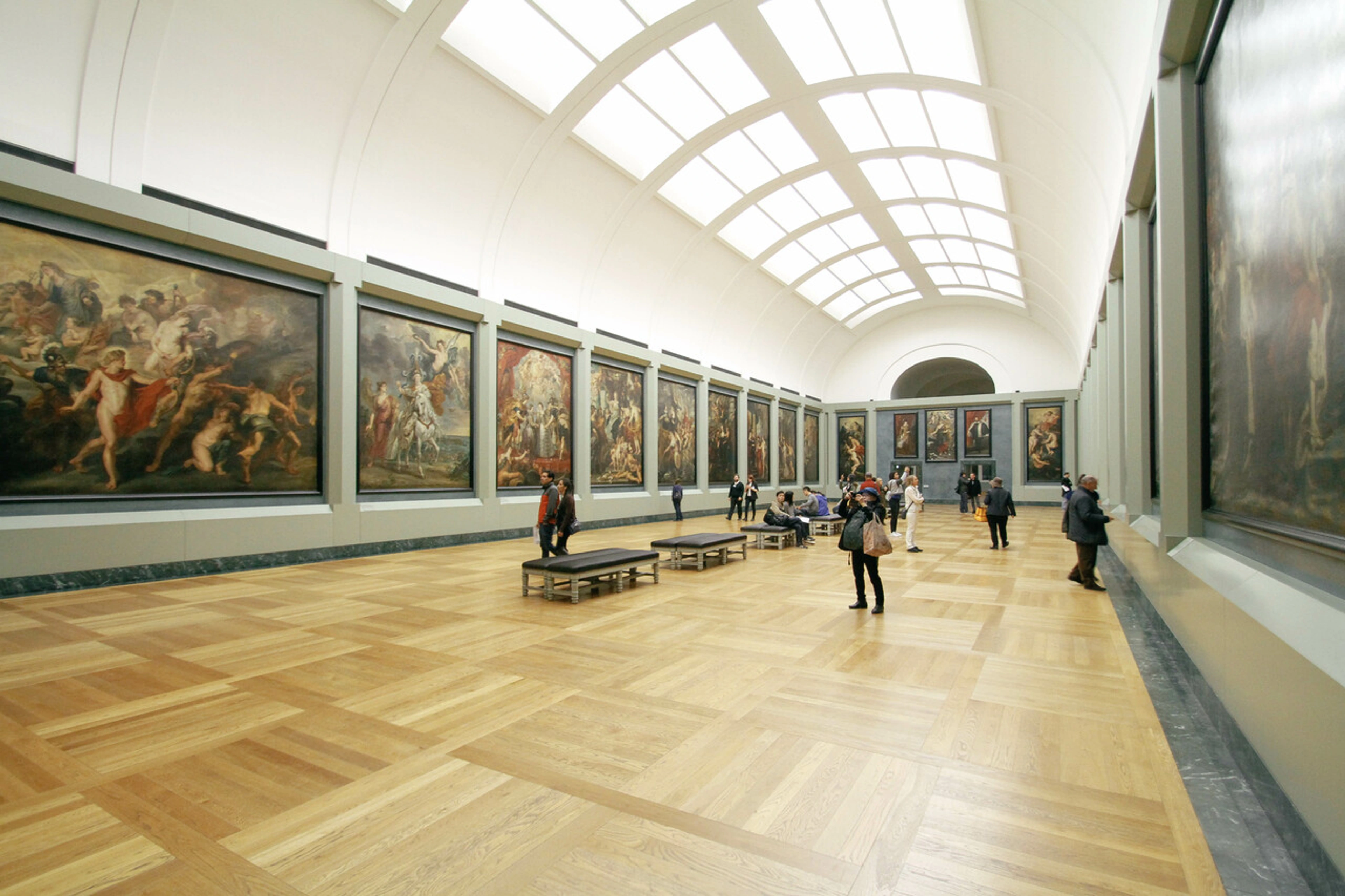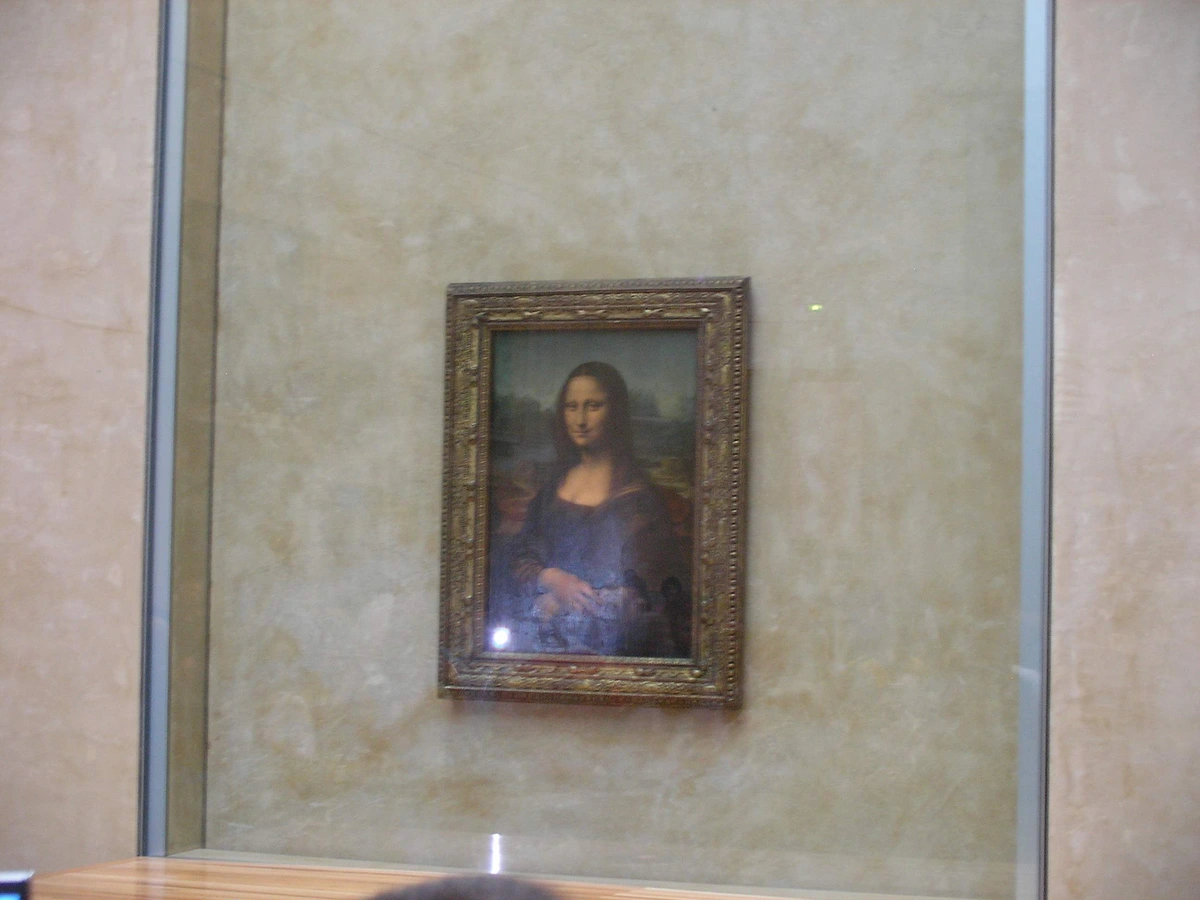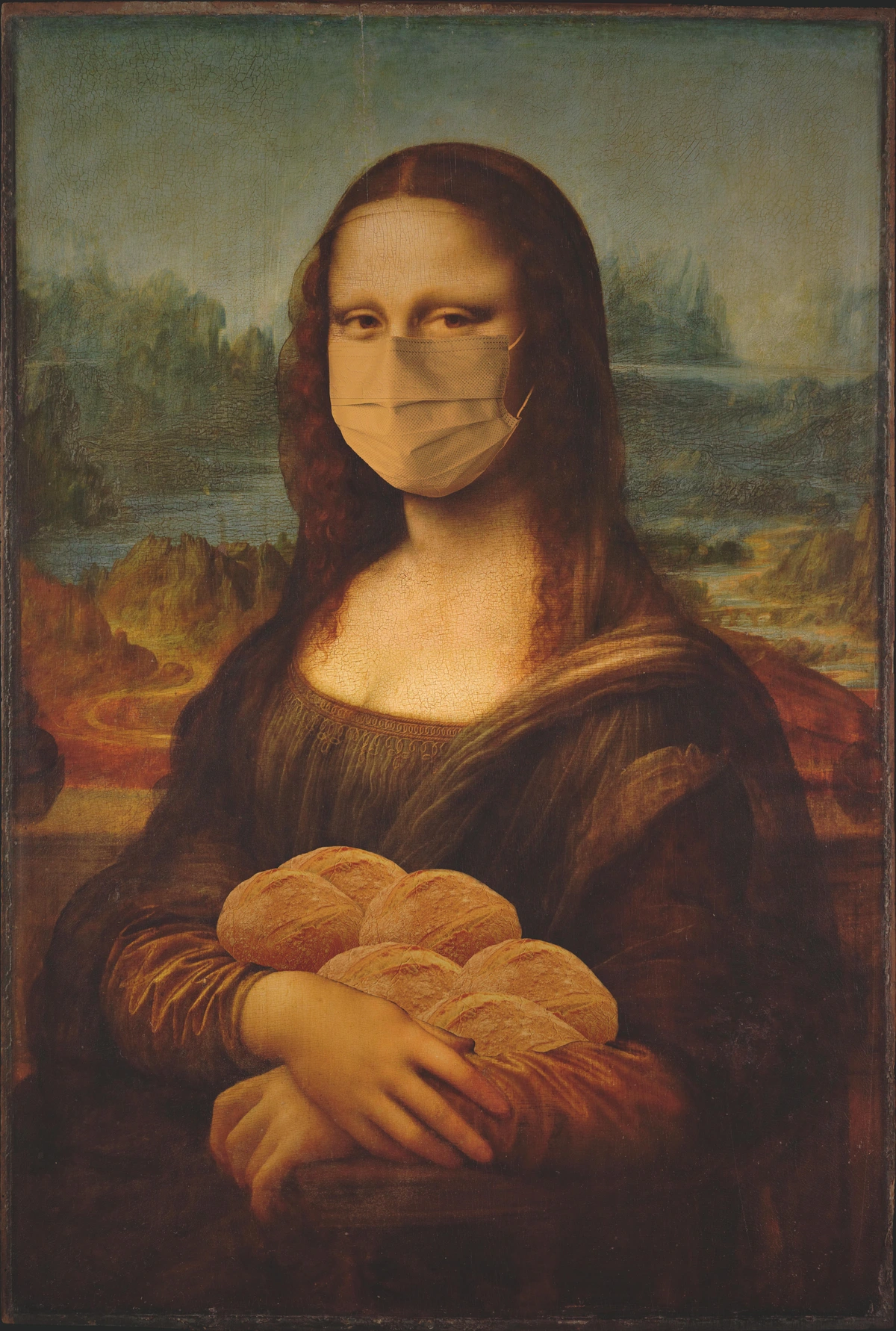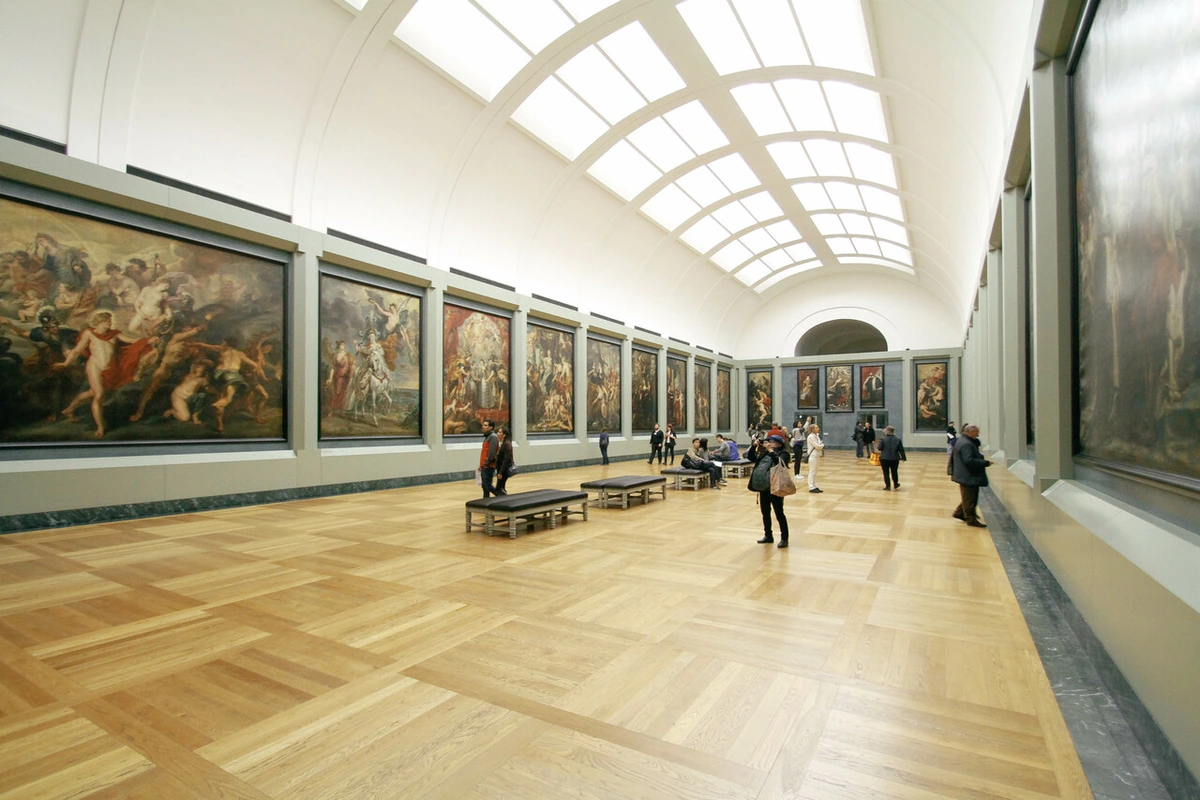
Mona Lisa's Enduring Fame: Art, Theft, Culture, & Personal Journey
Unravel the Mona Lisa's enigma. Explore Leonardo's genius, the dramatic 1911 theft, cultural impact, and the collective Louvre experience that forged her iconic, debated legacy.
Beyond the Smile: My Personal Journey into the Mona Lisa's Unrivaled Legacy
I'll confess: my first encounter with the Mona Lisa at the Louvre was, well, a bit underwhelming. Picture this: me, elbow-to-elbow with a sea of selfie-stick wielding tourists, craning my neck to glimpse a small, somewhat faded portrait behind formidable bulletproof glass. My initial, admittedly ungracious, thought? 'This is it?' That peculiar sense of anti-climax, that comical gap between monumental legend and tangible reality, is a feeling I now understand is almost part of the pilgrimage. But as I peeled back the layers of her story, that initial shrug transformed into a deep fascination. I began to wrestle with a big question: what truly gives her such an undeniable magnetic pull? My conclusion, which I'm eager to share, isn’t about one single 'magic trick.' Instead, it's a perfect storm—a powerful confluence of Leonardo's revolutionary artistic genius, an astonishing historical drama, and an accidental yet brilliant marketing masterclass—that has enshrined her as the undisputed queen of the art world. This journey into her legacy has taught me that her fame goes far deeper than just a pretty smile, touching on how we define beauty, value, and celebrity itself, weaving a narrative I'm still trying to untangle.
Leonardo's Audacious Brushstrokes: A Renaissance Revolution in Vision
Before any scandals or crowds, there was the sheer, audacious brilliance of the art itself. On a modest poplar panel, a quiet revolution was unfolding. You see, when Leonardo picked up his brushes in the early 16th century, portraiture, especially in Florentine circles, tended to be quite rigid. We're talking stiff profiles, formal poses, and subjects often presented more as symbols of status than as living, breathing individuals. Think of how a detailed drawing is colored in, with sharp, discernible outlines and a focus on documenting appearance. If you've ever browsed older collections, say at the Uffizi Gallery in Florence, you'd reveal a plethora of these earlier, more descriptive styles – figures often posed almost like statues, beautiful but static. Artists like Botticelli or Ghirlandaio, for all their genius, largely stuck to conventions that emphasized clarity over psychological depth.
Then came Leonardo da Vinci. A true polymath—someone whose expertise spans vast areas, like an anatomist, an engineer, a scientist—his profound understanding of the human body, optics, and psychology didn't just inform his painting; it transformed it. His meticulous anatomical studies, for instance, gave him an unparalleled grasp of underlying musculature and bone structure, allowing him to render the human form with a subtle, living quality, even when softened by his groundbreaking techniques. For those of you who, like me, find yourselves utterly absorbed in the sheer scope of his genius, my ultimate guide to Leonardo da Vinci offers a deeper dive into his incredible mind.
Leonardo spent years on this portrait, not merely documenting Lisa del Giocondo (the wife of a Florentine merchant), but entirely reinventing what a portrait could achieve. He shattered convention with her relaxed three-quarter pose, inviting a far more direct, intimate connection than anything seen before. This wasn't just a record of appearance; it was an audacious attempt to capture the very essence of a person’s inner life, her fleeting thoughts, her psychological landscape. Unlike many of his contemporaries who saw the background as a mere stage, Leonardo dissolved her figure into a fantastical, almost terrestrial landscape, creating a unified, breathing world within the frame that felt as alive as she did, seamlessly merging with her presence. He dared to paint a soul, not just a face.
Sfumato and the Elusive Gaze: Leonardo's Optical Masterclass
Once you've navigated the crowds and managed to truly focus on the painting – a triumph in itself, believe me – the profound magic of Leonardo’s technique truly reveals itself. He masterfully employed sfumato, a term describing a painting technique where colors and tones blend so imperceptibly that no harsh lines or discernible edges remain. Think of the way a distant mountain range dissolves into a hazy, seamless gradient against the sky, or the gentle diffusion of morning mist blurring the contours of a forest. That’s sfumato. While many contemporary portraits relied on crisp outlines and clear divisions, almost like coloring within the lines, Leonardo achieved this breathtaking subtlety by applying countless thin, translucent glazes of oil paint, layer upon painstaking layer. This isn't just a fancy word; as an artist, I recognize it as the key to the Mona Lisa’s famous, elusive quality – it allows for that incredible softness and depth that I strive for in my own art for sale. The genius of sfumato isn't just aesthetic; it’s scientific. Leonardo understood human perception, how our eyes perceive objects differently depending on light and distance. Sfumato mimics natural atmospheric effects and the slight blurring our peripheral vision experiences, creating a living, breathing form that feels impossibly real. For a deeper dive into this groundbreaking technique, my article on what is sfumato is particularly insightful.

This masterful blurring of edges, especially around her eyes and the corners of her mouth, isn't merely aesthetically pleasing; it ingeniously plays tricks on your perception. It deliberately leaves room for your own mind to fill in the gaps, making her expression appear to shift and change, a dynamic, living quality few other portraits achieve. It's a subtle invitation to co-create her mood.

And then, of course, there's that smile. Is it really a smile? A knowing smirk? Or just a trick of the light and a clever manipulation of our peripheral vision? The debate rages on, with some theories suggesting the smile is more pronounced when viewed indirectly, fading as you look directly at her lips. It’s an optical illusion woven into the very fabric of the painting, making her a perpetual enigma, daring you to unlock her secrets.
Coupled with her eyes, which famously seem to follow you across the room, it creates an incredibly intimate and psychological connection. This "direct gaze" technique, where irises and pupils look straight out, wasn't new. But Leonardo’s execution – with an unprecedented, subtle precision that makes it effective from nearly any angle – elevates it to a new level. Many painters would render eyes with sharp lines, making the gaze feel fixed. Leonardo's sfumato around the eyes softens them, creating an illusion of subtle movement and life that truly makes you feel like she’s looking right into your soul, holding back a profound, universal truth. You don't just observe the Mona Lisa; you engage with her, becoming part of the painting's ongoing dialogue. This psychological depth and direct, almost confrontational gaze were revolutionary, far ahead of their time, and still captivating. Honestly, it’s a little unnerving, like she's daring you to unlock her secrets, even today.

From Treasure to Icon: The Saga of the 1911 Theft and its Aftermath
Now, as much as I champion Leonardo’s artistic brilliance, even I know that genius alone doesn't guarantee global superstardom. Plenty of breathtaking works by him and his contemporaries don't command the same frantic attention. Before 1911, the Mona Lisa was indeed admired by artists and connoisseurs, a revered treasure within the Louvre’s collection. But she wasn't yet the household name she is today, not truly. What truly catapulted her into the stratosphere, weaving her into the fabric of global consciousness, was a dramatic, real-life thriller that could rival any Hollywood plot: the theft of 1911.
A Disappearance That Ignited the World and Changed Museums
Imagine the pandemonium! The most famous painting in the world (though, let’s be honest, she wasn’t quite that famous yet, more a quiet superstar among the art elite) vanishes from the Louvre in broad daylight. Vincenzo Peruggia, an Italian handyman who had briefly worked at the museum, stole it. His motive? A misguided, yet undeniably patriotic, belief that the painting rightfully belonged in Italy—a sentiment shared by some who felt Napoleon had illicitly acquired Italian art for France. For over two excruciating years, the world was in a frenzy. Newspapers ran daily updates, wild theories abounded (even Picasso found himself briefly questioned!), and the gaping void on the Louvre wall became a morbid pilgrimage site, drawing crowds just to see its absence. This wasn't just news; it was a global phenomenon, a sustained, breathless media campaign that turned a painting into a living protagonist, a survivor against all odds. People created songs, poems, and even merchandise around her absence. This sustained attention, the desperate international search, the sheer audacity of the crime – it all transformed the Mona Lisa. Immediately, artists and caricaturists began referencing her disappearance, creating poignant or humorous works that underscored her newfound, albeit stolen, celebrity. This era also crucially led to a significant overhaul of museum security protocols worldwide, making such brazen acts far less likely today—for better or worse, depending on how you feel about art being accessible versus secure.
When she was finally recovered in 1913, discovered by Peruggia as he attempted to sell it to an art dealer in Florence, the public hysteria was immense. She toured Italy in triumph, heralded by jubilant crowds, before her grand return to France. This wasn’t just a painting anymore; it was a character returned from a global drama, a testament to resilience. The theft didn't merely recover a masterpiece; it forged an icon, proving that sometimes, controversy and sheer drama are, quite unexpectedly, the best marketing campaigns of all. This historical twist cemented her place as a cultural touchstone, a story everyone knew, whether they'd seen the art or not.
A Canvas for Culture: Reproduction, Parody, and Enduring Pondering
After the theft and its dramatic recovery, the Mona Lisa’s image truly became ubiquitous. No longer confined to the Louvre’s walls, she appeared everywhere: postcards, advertisements, cartoons, and countless parodies. But this widespread reproducibility transcended mere commercial ventures; it transformed her into a fertile ground for artists to comment on art itself, morphing her into a global cultural shorthand.
Artistic Reinterpretations & Cultural Commentary: An Artist's View
Artists across generations have reimagined her countless times. Consider Marcel Duchamp’s audacious L.H.O.O.Q.—his Mona Lisa sporting a mustache and goatee—a rebellious, absurd commentary on traditional art that deeply resonates with my own artistic impulse to challenge perceived sacred objects. Or Andy Warhol, whose repeated screen-printed images of icons like Marilyn Monroe eerily echo the Mona Lisa’s mass reproducibility, elevating her to the status of a commercial celebrity. Think about how many album covers, movie posters, or even political cartoons have borrowed her face. Even movements like Surrealism found inspiration in her enigmatic quality, using her image to explore the subconscious, twisting her familiar smile into something dreamlike or unsettling. More recently, contemporary artists like Banksy have subtly referenced her mystique in their street art, and she continues to grace countless advertising campaigns, from high fashion to everyday products. She's essentially become the world's most adaptable meme, a cultural chameleon.
These artists weren't just reproducing her; they were interrogating her, leveraging her iconic status to question notions of originality, authorship, and the very value assigned to a masterpiece in our increasingly media-saturated world. She became shorthand for 'art' itself, a remarkably blank canvas onto which popular culture could project its own ideas, humor, and social commentary. It’s like everyone knows her face, so you don't even need to say "art" – just show her, and the message lands.

Want to critique modern life? Put a face mask on Mona Lisa. Want to mock pretension? Give her a mustache. She proved endlessly adaptable, demonstrating that true fame often stems from being both profoundly revered and relentlessly reinterpreted. In our digital age, this phenomenon has only intensified. Think of the countless memes, social media filters, and viral posts that feature her enigmatic face – she truly is the original viral sensation, a constant, evolving conversation starter that keeps her perpetually fresh, even after centuries.

For me, looking at these reinterpretations, I realize the Mona Lisa isn't merely a painting; she's a vibrant cultural mirror, reflecting our ever-changing relationship with art, technology, and celebrity. It’s truly fascinating how a single image can become such a versatile vehicle for contemporary thought, a testament to her enduring, almost living, legacy, influencing even my own artist's journey/timeline and challenging my ideas of what makes a work truly 'timeless.'
The Louvre Pilgrimage: The Aura of a Shared, Often Chaotic, Experience
When you finally navigate the labyrinthine halls of the Louvre, past seemingly endless masterpieces, and arrive at the packed Salle des États, it’s almost comically anticlimactic how relatively small the Mona Lisa actually is. You’re kept a respectful (or, let’s be honest, frustratingly distant) several meters away by ropes, and she's cocooned behind layers of bulletproof glass. This stringent protection is a necessity: painted on a fragile poplar panel with delicate oil glazes, her preservation is an ongoing challenge, constantly monitored by dedicated conservators. It’s quite the feat of engineering and care, really, to keep her in such pristine (and secure) condition.
The experience itself—the anticipation, the dense crowds, the gentle jostling, and the rhythmic clicking of a hundred phone cameras—has become an integral part of her fame. It's less about a serene moment of individual artistic contemplation and more about a collective cultural pilgrimage, a communal endurance test in the name of art. You’re not just looking at a painting; you're participating in a global phenomenon, an unspoken agreement that this piece matters. While other masterpieces in the Louvre and beyond draw their own admirers, few command the sheer density and collective energy that surrounds da Vinci's portrait, especially in a gallery like this one. For those bracing for the crowds, a first-timer's guide to the Louvre Museum can be incredibly helpful; trust me, a little preparation goes a long way to managing expectations.

And yes, I know what some of you might be thinking, and what I certainly thought initially: "Is she really that great, or is it all just hype? Is it just because she's famous that she's famous?" It’s a perfectly valid, even essential, question, and one that ironically, further fuels her fame. The enduring debate about her true artistic merit versus her manufactured celebrity is a vital part of her mystique. Even those who walk away unimpressed still talk about her, still engage with the very question of her fame. My advice, if you find yourself overwhelmed: try to block out the noise for just a moment. Look not for the smile, but for the subtle blend of tones in her skin, the way her hand rests, the seamless integration of her figure into the background. From my perspective as an artist, while the cultural layers and the 'event' of seeing her are undeniable, the foundation of Leonardo's genius is rock solid. That masterful sfumato, the profound psychological depth, the revolutionary posing – it's all there, waiting to be seen if you can look past the crowds and the hype, and perhaps, truly see. It’s like finding the quiet hum beneath a noisy party.

My Reflection: Art, Legacy, and Our Own Projections
So, why is the Mona Lisa so famous? My journey, born from that initial flicker of anti-climax, has confirmed my hypothesis: it’s indeed a perfect storm, yet one far more intricate and perpetually fascinating than I could have imagined. It's the unique intersection of unparalleled artistic innovation—Leonardo's almost scientific mastery of capturing the human soul on canvas—a dramatic and utterly unpredictable history that thrust her into the public consciousness through scandal and recovery, and an unmatched capacity for cultural reinterpretation that ensures her ongoing relevance, endless adaptability, and fierce adoration. I've also realized that the criticisms, those voices that dismiss her fame as merely manufactured hype, only add to her mystique, provoking deeper engagement and debate. After all, what truly great work of art hasn't sparked arguments?
Beyond the cultural and artistic, her fame also generates substantial economic benefits, a tangible return on her intangible allure. Attracting millions of tourists to the Louvre and to Paris itself each year, she's a colossal economic engine. This commercialization, from merchandise licensing to the astonishing estimated value of the painting itself (insured for hundreds of millions, if not billions), further solidifies her status as a global landmark, a cultural asset with tangible returns. She stands as a testament to the idea that sometimes, genius needs a dash of fate and a generous helping of humanity’s collective imagination to truly transcend.
This deep dive into the Mona Lisa’s enduring fame has profoundly shaped my own approach to art, influencing everything from the creative direction of my art for sale to how I document my artist's journey/timeline. It’s a powerful reminder that a painting, or any piece of art, isn't a static object confined to a wall; it’s a living entity, constantly evolving and shifting in our collective minds. As for her future, I have no doubt she’ll continue to be both revered and debated, a cultural canvas onto which each new generation projects its own questions about beauty, meaning, and celebrity. Her fame isn't accidental; it’s a living, breathing co-creation between a singular genius and our endless human desire for a story, a mystery, an icon.
Standing before her again, I no longer just see a painting; I see a profound mirror, reflecting our own complex relationship with beauty, enigma, and the very concept of celebrity. She’s a masterpiece not just because Leonardo painted her, but because we, collectively, have chosen to make her one, projecting our desires for wonder, drama, and meaning onto her enigmatic, ever-shifting smile. And that, I think, is truly legendary. If this has piqued your curiosity about the intersection of art, history, and perception, you might enjoy visiting my museum in 's-Hertogenbosch, NL.
Key Takeaways: The Enduring Enigma
To wrap things up, here's my quick take on why the Mona Lisa remains an unparalleled global icon:
- Leonardo's Revolutionary Artistry: Her innovative psychological depth, the groundbreaking sfumato technique, and the expressive landscape were centuries ahead of their time, showcasing an understanding of human emotion previously unseen in portraiture.
- The Drama of the 1911 Theft: This real-life thriller didn't just recover a masterpiece; it catapulted her from an art treasure to a global household name, profoundly impacting museum security and igniting unprecedented media frenzy.
- Endless Cultural Reinterpretation: She's a blank canvas for artists and popular culture alike, constantly reimagined, parodied, and debated across generations and media, from Duchamp to digital memes.
- The Collective Experience: The act of seeing her at the Louvre has evolved into a cultural pilgrimage, amplifying her mystique, reinforcing her value, and generating significant economic impact through tourism.
- Her Unfathomable Mystery: That smile, those eyes, her subtle optical illusions – they invite perpetual engagement, personal interpretation, and endless debate, making her eternally captivating and a constant source of wonder.




